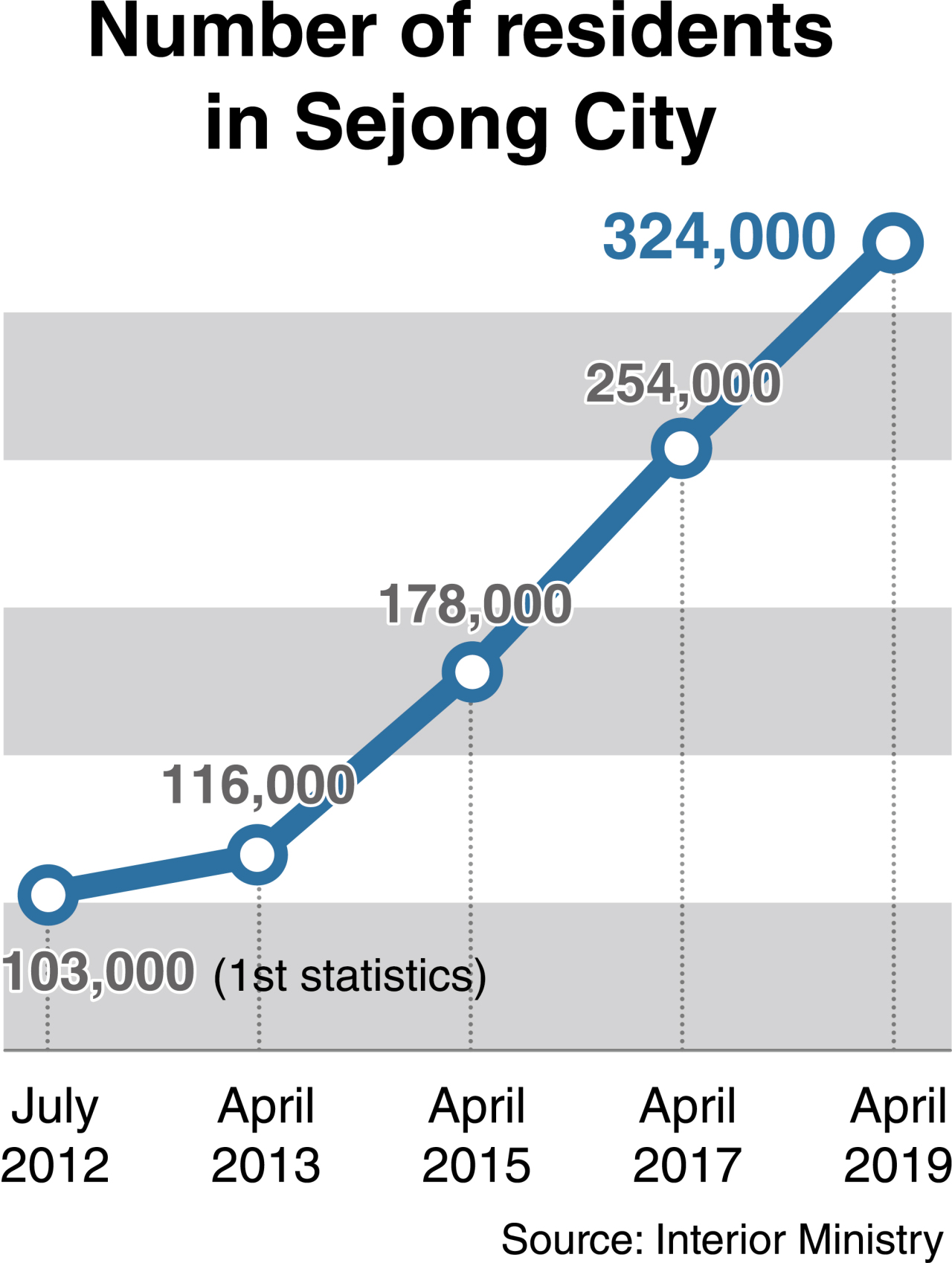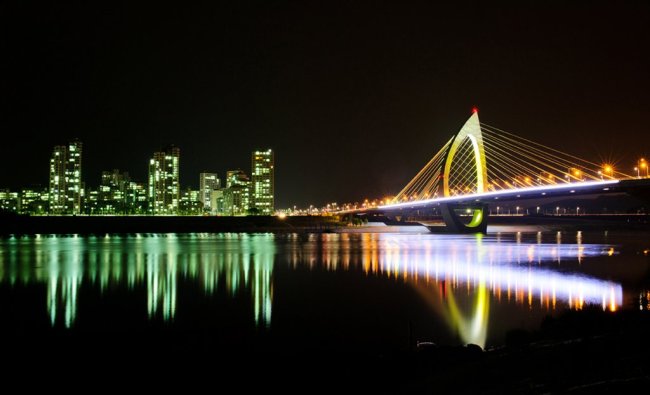[News Focus] Surging Sejong population appeals to mega-shopping malls, hospitals
By Kim Yon-sePublished : May 16, 2019 - 16:06
SEJONG -- It is now seven years since the government relocated numerous ministries and agencies to the newly developed special autonomous city of Sejong, neighboring the northwestern part of Daejeon, as part of its efforts to decongest Seoul.
Sejong has 14 dongs -- administrative divisions -- including Eojin-dong where the Government Complex is located, one eup -- town -- and nine myeons –- townships.
Sejong has 14 dongs -- administrative divisions -- including Eojin-dong where the Government Complex is located, one eup -- town -- and nine myeons –- townships.

Though the city is rapidly expanding, its infrastructure for living falls far short of demand.
As the city slowly grew, most residents picked the lack of department stores and general hospitals as the biggest inconvenience. Their substitutes were large discount stores and private clinics.
But the situation is slowly changing. A real estate agent in Sejong said, “As far as I’m concerned, retailers and the medical industry are reportedly closely monitoring the population growth in a bid to pre-assess business profitability.”
The number of residents in the city stood at 103,127 in July 2012, when the city was officially launched. Its population has shot up 214.5 percent to 324,417 as of April 2019.
Just in a year, it reported a 9.9 percent increase in population from 295,041 in April 2018, in the wake of relocation of the Ministry of Interior and Safety from Seoul and emergence of new apartment complexes.
While the Ministry of Science and ICT is scheduled to move from Gwacheon, Gyeonggi Province, to Sejong later this year, it is likely that the Ministry of SMEs and Startups, headquartered in Daejeon, will follow suit.
Further, three more apartment complexes, 3,256 household units collectively, in the city will receive applications later this month.
The realtor noted that AK& Sejong of Aekyung Group and Sejong NK Hospital will meet much of the demand, as they are poised to start full-fledged operations in the coming weeks.
The two are still not regarded as an ordinary department store and large-scale general hospital, respectively,” he said. “Nonetheless, they will pave the way for bigger businesses to start operations here.”
According to industry insiders, major department stores like Shinsegae, Hyundai and Lotte generally set the threshold of 500,000 population to open their branches, as well as average purchasing power of households in regional cities.
A retailer sector employee cited the example of Gimpo, Gyeonggi Province, where Hangang new town is located, which has a population of 429,752. It has yet to have a department store or a university-funded hospital.
In contrast, a unit of Chungnam National University Hospital, is under construction in Dodam-dong, a five-minute drive from the Government Complex Sejong.
The 14-story hospital, which will hold 500 beds is slated to open in June 2020 after being completely built next March.
A civil servant complained about the relatively long waiting time at private medical clinics in store buildings and the de facto monopoly of a discount chain near the complex.
A resident pointed out that the city should be a united entity to have better infrastructure, calling for the remaining ministries, including the Ministry of Gender Equality and Family, to relocate to Sejong from Seoul as soon as possible.

In the same vein, the Sejong local government and local politicians are striving to attract a unit of the presidential office and the National Assembly.
Still, many businesses across the country regard the city as a golden goose, citing growth potential. An owner of a private academic institution in Incheon said he is considering opening a branch in Sejong, while a convenience store owner in Gimpo said she has bought some land in the autonomous city for new business.
Meanwhile, a civil servant predicted that the number of Sejong residents will surpass 500,000 in about five years, expressing concerns about transportation woes. “Since two years, I’ve been experiencing traffic jams during peak commuting hours.”
He also commented on the inconvenience of reaching KTX station in Osong-eup, Cheongju, North Chungcheong Province, and others in Jochiwon-eup and Daejeon City.
A real estate agent downplayed the current absence of mega-shopping malls and medical centers.
“Active property investments and rampant inquiries by out-of-towners tells you about the potential of this city,” he said.
By Kim Yon-se (kys@heraldcorp.com)







![[Graphic News] More Koreans say they plan long-distance trips this year](http://res.heraldm.com/phpwas/restmb_idxmake.php?idx=644&simg=/content/image/2024/04/17/20240417050828_0.gif&u=)
![[KH Explains] Hyundai's full hybrid edge to pay off amid slow transition to pure EVs](http://res.heraldm.com/phpwas/restmb_idxmake.php?idx=644&simg=/content/image/2024/04/18/20240418050645_0.jpg&u=20240419100350)





![[From the Scene] Monks, Buddhists hail return of remains of Buddhas](http://res.heraldm.com/phpwas/restmb_idxmake.php?idx=652&simg=/content/image/2024/04/19/20240419050617_0.jpg&u=20240419175937)

![[KH Explains] Hyundai's full hybrid edge to pay off amid slow transition to pure EVs](http://res.heraldm.com/phpwas/restmb_idxmake.php?idx=652&simg=/content/image/2024/04/18/20240418050645_0.jpg&u=20240419100350)

![[Today’s K-pop] Illit drops debut single remix](http://res.heraldm.com/phpwas/restmb_idxmake.php?idx=642&simg=/content/image/2024/04/19/20240419050612_0.jpg&u=)